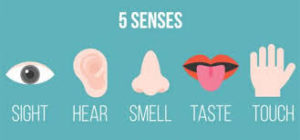Exercise & Motivation
There are many different kinds of exercise, but all exercise is for one purpose, to stimulate your brain. You may have thought you were exercising your body, but you first exercise your brain which in turn makes changes that effect your body. Your brain’s wiring is not fixed or permanent, it is capable of change. As a matter of fact your brain is always in a state of wiring, re-wiring or un-wiring. What causes these wiring changes is stimulation from the world outside your body. Stimulation enters your brain through your five senses, touch, sight, sound, smell, taste and through movement. Just living, enjoying and experiencing the world shapes your brain.
Exercise uses movement to stimulate, or in other words talk to, your brain. This stimulation asks the brain to make changes to better adapt to the world you are experiencing. Muscles and joints are passive like marionette puppets. they have no will of their own. They follow orders from the puppet master – the brain. All movement, especially specifically directed exercise creates communication between your muscles and your brain.
Exercise comes in four different forms:
Cardio – This type of exercise tells your brain to temporarily increase your heart rate. Like any other muscle when the heart muscle is made to work, it gets stronger. A stronger heart pumps blood through vessels with less effort. Less effort means a longer lasting pump.
Resistance – Any exercise that has you pulling against something that is resisting you triggers a response in your brain to pull back. When a muscle pulls on the bone it is anchored to, the bone responds with laying down more calcium at the point of muscle attachment, it is the body’s way of ‘pulling back’. Muscles and bones respond to resistance by becoming bigger and stronger.
Stretching – Stretching skeletal muscles is sending a message to the brain to remove tough cross fibers in muscle tissue and replace them with elastic ‘giving’ fibers. Stretching also takes joints to their movement limits, this opens up the joint capsule, and creates a vacuum that draws in fluid. This natural pump brings fluid into the cartilage found at every joint. This fluid contains oxygen and nutrients that feed the cartilage. Therefore, stretching creates more elastic muscles and healthier cartilage.
Balance – Exercise requiring balance challenges muscles under your direct control and other muscles not under your direct control, to respond to changes in the distribution of your weight. The result is more uniform muscle tone and movement.
Motivation to Exercise
If you give a rat a running wheel and it decides not to use it, are genes to blame?
A study was done on rats to determine whether exercise motivation is genetic.
These were the conclusions:
The study found that “Animals or people that are overweight, ill, or have poor muscle tone, tend to be sedentary. If moving is difficult, you don’t do it.” But when unhealthy fat rats were bred with other unhealthy fat rats, generations later there was really no significant difference in their offspring’s motivation to exercise compared to slimmer healthy rats. 
In other words, “differences in physique were not driving differences in exercise behavior.” So the researchers began to examine another possible determinant of exercise behavior: psychology. It was here that genetics entered. The scientists compared the activity of thousands of genes in a specific portion of the brain that controls reward behavior, or the motivation to do things because they’re enjoyable. They found dozens of genes that differed between the two groups, those that exercised and those that avoided exercise.
The conclusion is that our exercise motivation probably does have a genetic component. But before you ramble off the excuse that you are genetically wired for laziness and therefore can’t help being a couch potato, you should know this:
Epigenetics is the science of how our beliefs (what we think) and our environment can actually change our biology.
So here are 5 ways to change your epigenetics about exercise:
1. Set a Fun Goal – For instance to lose weight, begin your walking program by walking a little then running a little, increasing the running portion every week.
2. Use Exercise While you Go Places – If you make exercise a part of something you need to get done, exercise motivation seems easier somehow.
3. Have A Routine – Schedule in some kind of regular routine. Meeting with a friend or friends, or working with a trainer, helps you develop a routine.
4. Join Something – If you are trying to go it alone try something different. Join a sport team or group activity that is social and fun as well as exercise. If you are overweight know this: People who get support are proven to lose three times more weight than people going it alone!
5. Create A Regular Walking Destination – Choose a familiar route that is enjoyable and walk it at a really good comfortable pace, with a good arm swing, every week. Having a destination vs. random walking, makes it easier to motivate yourself to do it regularly.
Now that you know exercise builds a stronger more efficient brain, does exercise seem more worth the effort?

